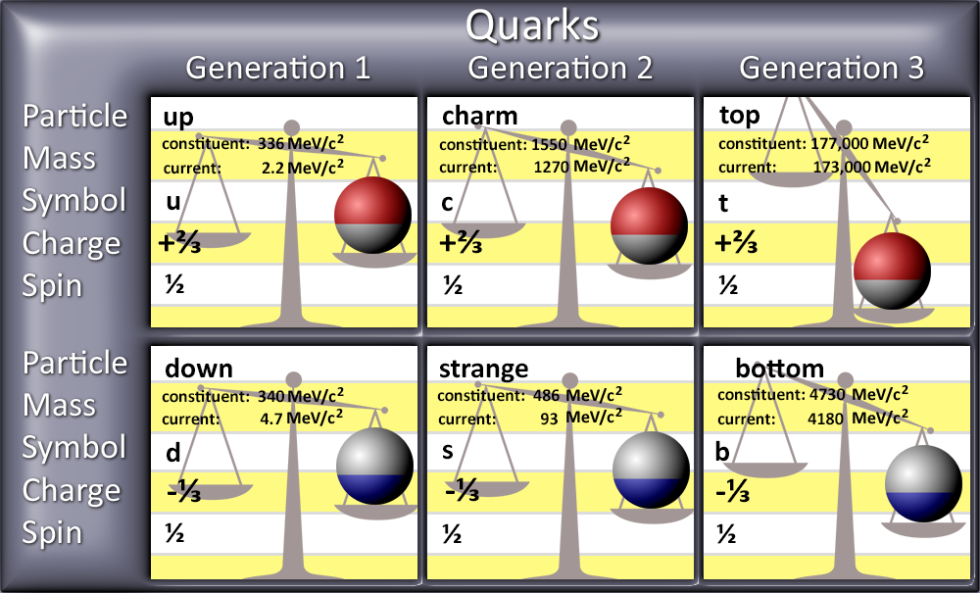Quarks and electrons are fundamental constituents of matter, residing at the very fringes of our comprehension of the universe. The Standard Model of particle physics categorizes quarks as building blocks that combine to form protons and neutrons, while electrons embody a class of fundamental particles known as leptons. This prompts a tantalizing inquiry: Are quarks or electrons composed of even smaller particles? The exploration of this question reveals an intricate landscape of theoretical physics, where the boundaries of knowledge are continually evolving.
The pursuit of understanding the substructure of quarks and electrons has inspired many groundbreaking theories. To approach this question, one must first appreciate the defining characteristics of quarks and electrons. Quarks are never found in isolation but exist within composite particles called hadrons. This confinement stems from the concept of color charge, akin to the electrical charge but operating under the principles of quantum chromodynamics (QCD). In contrast, electrons are perceived as elementary particles, possessing intrinsic properties such as mass, charge, and spin, yet remain devoid of observable substructure according to current experimental validations.
The apprehension that quarks and electrons may be reducible to smaller entities has led researchers to delve into the frameworks of string theory and loop quantum gravity. String theory posits that the fundamental constituents of reality are not point-like particles but rather one-dimensional strings vibrating at specific frequencies. Each vibrational mode corresponds to a different particle, thus providing a cohesive explanation for the multitude of particles observed in nature. If this theory were to hold true, one could conceive quarks and electrons as mere manifestations of underlying string-like structures, paving the way for a more unified understanding of the forces and particles in the universe.
Loop quantum gravity, on the other hand, offers a different perspective, suggesting that spacetime itself has a discrete structure at the Planck scale. In this paradigm, particles such as quarks and electrons arise from quantized loops of gravitational flux. This theory excels in reconciling general relativity with quantum mechanics, yet it does not explicitly assert that quarks and electrons are comprised of smaller entities. However, it does invoke the necessity of further exploration into the nature of fundamental particles.
The technological advances in particle accelerators, like the Large Hadron Collider (LHC), have provided insight into the behavior of quarks and other elementary particles under extreme conditions. Through high-energy collisions, researchers have probed the interactions amongst quarks, effectively studying their properties and behaviors. While investigations thus far have not indicated a substructure for quarks, the quest is far from concluded. Each experiment undertaken sheds light on the probabilities and possibilities inherent in particle physics. Therefore, scientists remain vigilant, watching for any anomalies that may suggest a deeper complexity.
Moreover, efforts such as the search for supersymmetry (SUSY) aim to unveil a new spectrum of particles that could potentially provide explanations for the limitations of the Standard Model. Supersymmetry proposes a partner particle for every known particle, suggesting that there may exist yet undetected particles that could illuminate the nature of quarks and electrons. Although supersymmetry remains largely theoretical, its validation could significantly alter our understanding of the fundamental fabric of the universe.
In addition to theoretical frameworks, the philosophical implications of navigating the subatomic realm warrant consideration. The concepts of fundamental particles and the potential for substructure evoke profound questions regarding the nature of existence. If quarks and electrons are indeed made of smaller components, one might ponder the ultimate nature of reality—do these reductions end, or is there an infinite regress of particles? Such inquiries not only challenge the foundations of physics but also blend the disciplines of metaphysics and epistemology.
As research progresses, the advent of new experimental techniques continues to augment our understanding of particle physics. Initiatives like neutrino observatories and dark matter experiments broaden the scope of inquiry into matter’s constituents. Neutrinos, despite being elusive, have shown to possess remarkable properties, indicative of new physics beyond the Standard Model. As findings accumulate, they contribute to a comprehensive picture that could either substantiate or refute theories suggesting quarks and electrons are built from even tinier particles.
The possibility that quarks and electrons may be reducible to smaller entities opens a rich dialogue among physicists. While the current consensus affirmatively supports the notion of quarks as fundamental but composite hyperstructures, and electrons as elementary yet enigmatic particles devoid of a discernible substructure, the horizon is ever-expanding. Continuous refinement and exploration into the subatomic domain may usher in a breakthrough that dismantles established paradigms. Until then, quarks and electrons endure as our fundamental pillars in the ongoing quest to unravel the mysteries of the universe.
In conclusion, the question of whether quarks and electrons are constructed from even smaller particles is emblematic of the broader scientific pursuit of knowledge. As innovative technologies unveil the behaviors of these fundamental particles, and as theoretical physicists expand the boundaries of our understanding, the dialogue between theory and experimentation continues to evolve. Each step taken in this exploratory journey reinforces the notion that our comprehension of the universe remains a dynamic and intricate tapestry, woven from the threads of elementary particles and the profound mysteries hidden at their core.












